1025 Jefferson Avenue
Detroit, Michigan
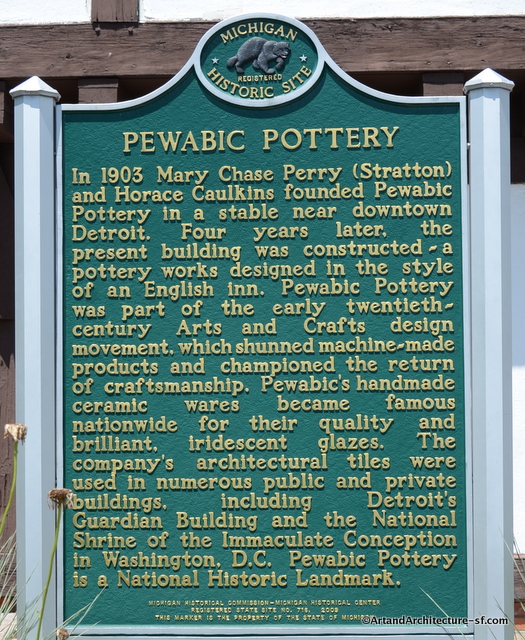 Pewabic Pottery is a ceramic studio and school founded in 1903 by artist Mary Chase Perry Stratton and Horace James Caulkins.
Pewabic Pottery is a ceramic studio and school founded in 1903 by artist Mary Chase Perry Stratton and Horace James Caulkins.
Caulkins was considered a high-heat and kiln specialist, and developed the “Revelation kiln”. Caulkins invented the kiln to help with his dental supply business, he then sold his kilns to other dentists so they could fire enamel for their patients.
Mary Perry Stratton was “the artistic and marketing force. Mary Stratton established the ceramics department at the University of Michigan and taught there. She also taught at Wayne State University. In 1947, she received the highest award in the American ceramic field, the Charles Fergus Binns Medal.
The collaboration of two and their blend of art and technology gave the pottery its historic place in the International Arts and Crafts movement exemplifying the American Craftsman Style.
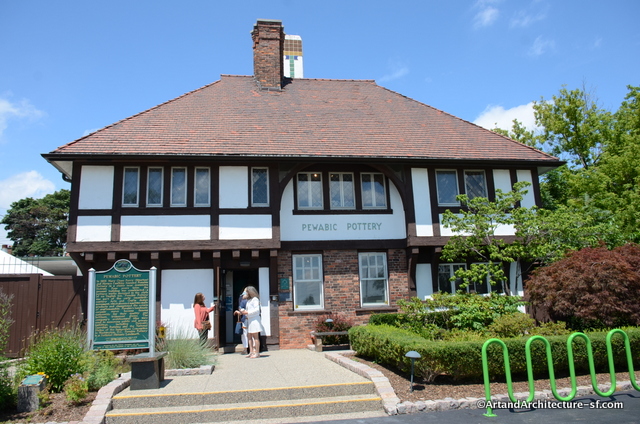
The pottery continues in operation today and was designated a National Historic Landmark in 1991.
The word Pewabic is derived from the Ojibwa (or Chippewa) word “wabic”, which means metal, or “bewabic”, which means iron or steel, and specifically referring to the “Pewabic” Upper Peninsula copper mine where Ms. Stratton’s father worked and where she spent time taking long walks with him.
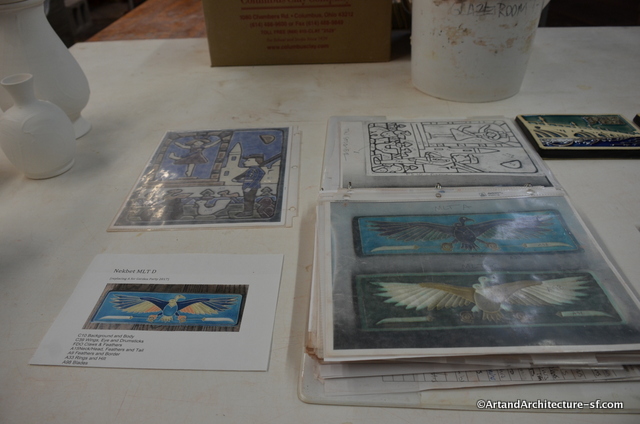 Under Mary Stratton’s artistic leadership, Pewabic Pottery employees created lamps, vessels, and architectural tiles. They were known for their iridescent glazes and architectural tiles.
Under Mary Stratton’s artistic leadership, Pewabic Pottery employees created lamps, vessels, and architectural tiles. They were known for their iridescent glazes and architectural tiles.
Mary Stratton passed away, at the age of 94, in 1961. In 1964 Caulkins’ son, Henry deeded the Pewabic building and property to Michigan State University, which operated the site as part of its continuing education program until 1979.
This was not a successful venture and eventually a nonprofit, the Pewabic Society, Incorporated was established to help bring back the company.
In 1981 the Pewabic Society took ownership of Pewabic restoring the building and revitalizing Pewabic’s design and fabrication program. At that time the Society also grew the mission to include education and the creation of a museum, archive and exhibition programs.
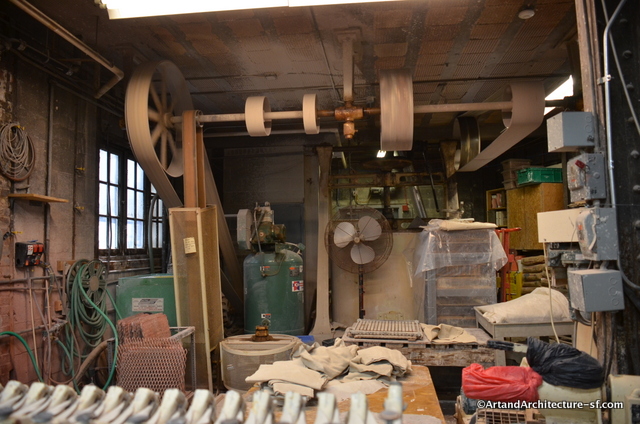
The overhead wheels drive a system that lies underground stirring powdered clay with water to create the many types of clays Pewabic uses. This system is original to the building
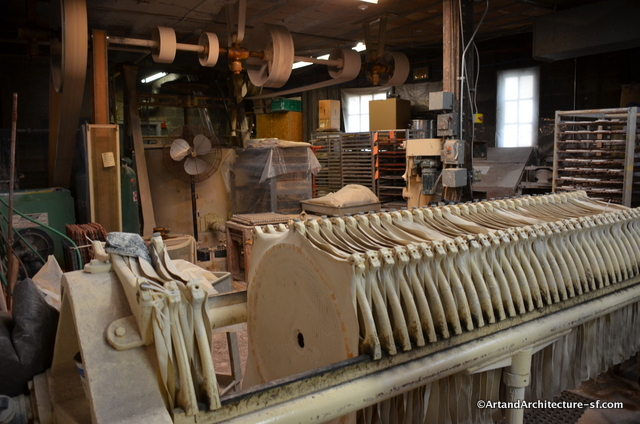
After the clay is removed from the mixing area it is run through this giant bladder to separate as much water as possible from the clay to make it a viable product to mold.
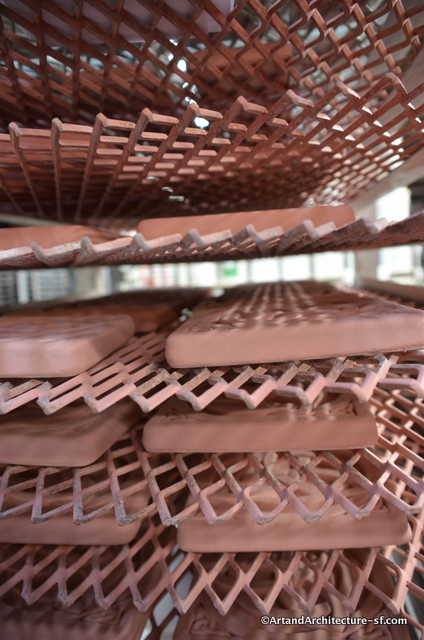
Pieces ready to be fired are placed on racks to head to the kilns
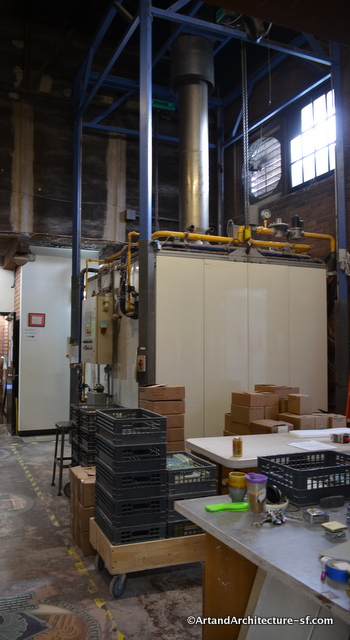
There are several different types of kilns at Pewabic, this large one lifts up as a box so that you can load pottery from all four sides, the box then comes down over the racks, allowing firing.
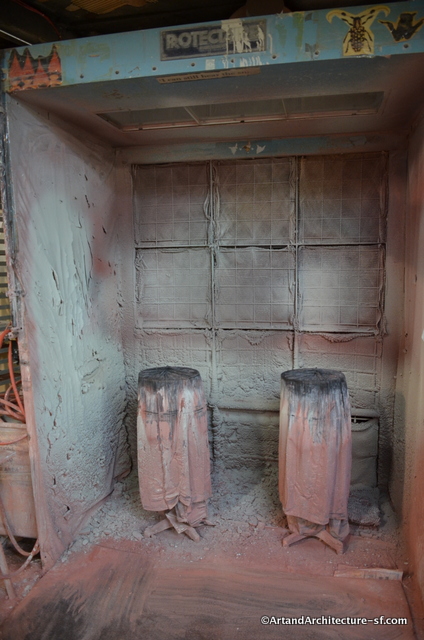
Many pieces have glaze applied, prior to firing, by a sprayer in this booth, this is not only faster but ensures a consistent color throughout
Today the company is a vital part of the community. The company’s most notable work, which was done under Mary Stratton, is the Basilica of the National Shrine of the Immaculate Conception in Washington, D.C.. The project consisted of arches outlined with iridescent Pewabic tile, huge ceramic medallions set in the ceiling, and fourteen Stations of the Cross for the crypt.
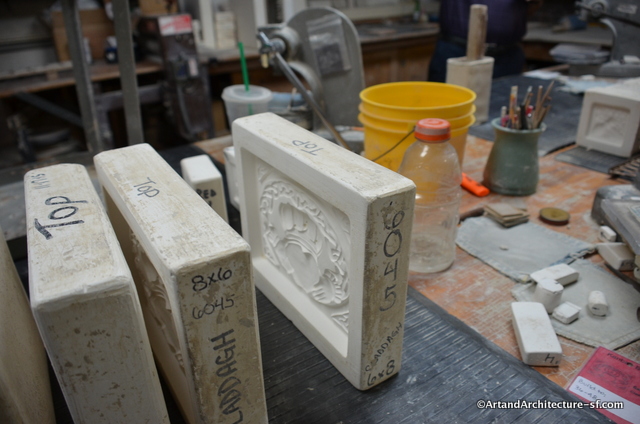
Most of the tiles that Pewabic manufactures are created in molds
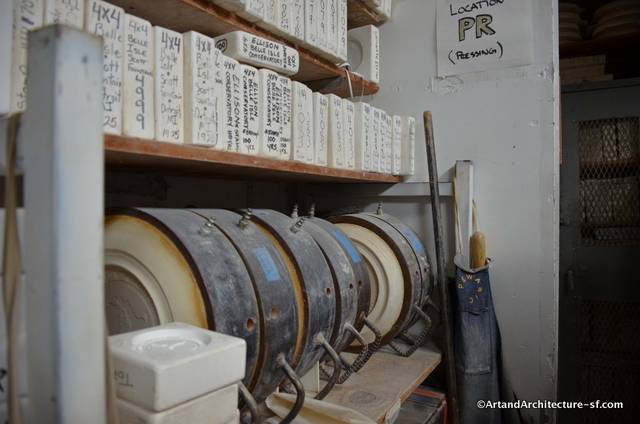
Just a very small sampling of the molds
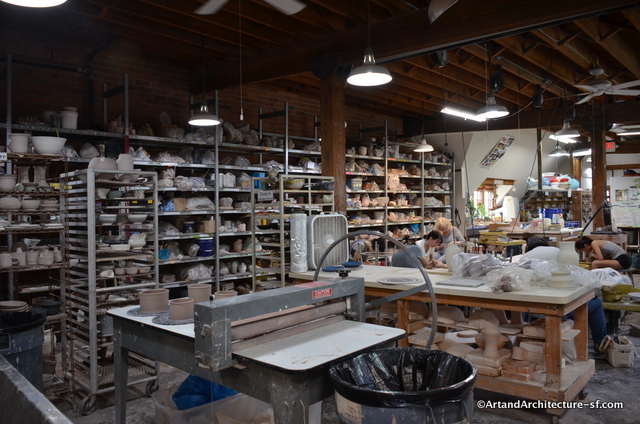
Much of the work at Pewabic is done on potters wheels.
Contemporary installations include Comerica Park, home of the Detroit Tigers, Detroit Medical Center Children’s Hospital, and the Herald Square in New York City.
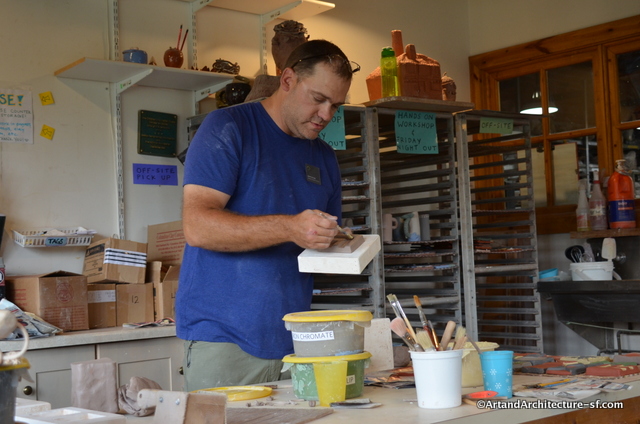
Pewabic also gives classes for budding and professional potters and ceramists.